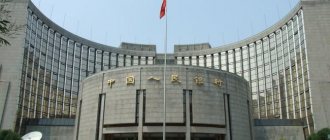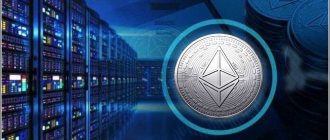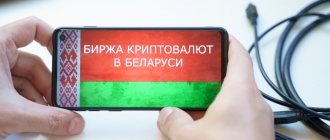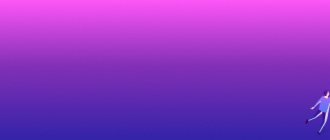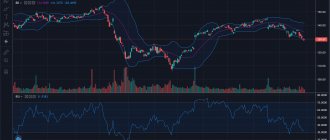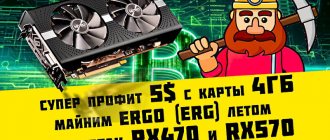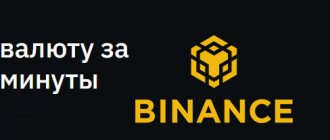On December 23, 1913, the Federal Reserve System (FRS) was created in the United States - a “private printing press” on a planetary scale to produce money in unlimited quantities.
As they say: “Money rules the world.” But who actually owns the institution that controls the money of America and the world? How “federal” is the Federal Reserve really? And why is the modern world ruled by the dollar - the US currency, one of the main reserve currencies of the world?
Every year Forbes publishes a list of the largest. The list tends to feature a lot of big names, but at the top there's always one company missing that can outshine the rest: the US Federal Reserve. But the Fed never appears on any list. Primarily because it is not listed on the stock exchange. But first of all, for the reason that the true owners of the Federal Reserve System prefer to remain unknown.
“Do not lend to your brother silver, bread, or anything else that can be given at interest; Give to the foreigner at interest, so that the Lord your God may bless you in everything that is done with your hands in the land where you are going to possess it (Deuteronomy 23:19, 20).”
“...and you will lend to many nations, but you will not borrow, and you will rule over many nations, but they will not rule over you. (Deuteronomy 28:12)"
“Then the sons of foreigners will build your walls, and their kings will serve you; For in my anger I struck you down, but in my good pleasure I will be merciful to you. And your gates will always be open, they will not be shut day or night, so that the wealth of the nations may be brought to you and their kings may be brought in. For the people and kingdoms that do not want to serve you will perish, and such nations will be completely destroyed" (Isaiah 60:10-12)
“The Matrix is everywhere. Even now she is with us. You see it when you look out the window or watch TV. You feel it when you work, go to church, pay taxes - a whole little world pulled over your eyes to hide the truth. Which one? - That you are only a slave, Neo. Like everyone else, you are in chains from birth, in a prison that you cannot touch, that you cannot smell, in a prison for the mind! Alas, it is impossible to explain what a matrix is. You have to see it for yourself" (From the movie "The Matrix").
“There are clearings, endless fields. People aren't even born there. We have been raised for a very long time. I didn’t believe it myself, but then I saw it with my own eyes, I watched how the dead were turned into a nutritional mixture and fed to the living. And so, observing this eerie rational precision, I realized a simple truth: what is a matrix? - dictate. The Matrix is a computer-generated mega-virus created to subjugate us...You are all living in a dream world. Welcome to the desert of reality" (From the movie "The Matrix").
The ancient Greek philosopher Aristotle warned against usury becoming the norm:
“In the art of making a fortune there is never a limit to achieving the goal, since the goal here turns out to be unlimited wealth and the possession of money. All those involved in money turnover strive to increase their capital to infinity” (Aristotle. Politics. St. Petersburg, 1911, p. 25).
He said it was crazy for money to produce money.
There is an economy , and this, translated from Greek, means house-building, house-building, satisfying the necessary needs of life (demographically determined needs - our note).
And there is chrematistics - the accumulation of wealth. In modern language this is exactly what capitalism means. People in ancient times were farsighted and more intuitive than we are. The prohibition on usury was contained in the Torah, the Holy Scriptures, and the Koran. In the old days, usury was practiced underground; this “craft” was condemned. In the Middle Ages or during the era of feudalism, Christians were forbidden to lend money on interest. For them it was not a godly, dirty business. And then the so-called bourgeois revolution occurred. And if we look carefully at who prepared these revolutions, who was the main beneficiary - as they say now, the beneficiary - then we will see that they were moneylenders. Historians say that the bourgeois revolution opens up space for the development of capitalism. It is important to emphasize here that, first of all, it is banking capitalism, and not just industrial and commercial capitalism.
In 1913, the US Federal Reserve System was created - a “printing press” for the production of dollars. The financial oligarchy - and these are the owners of the Federal Reserve System, Wall Street banks - seized power, first in individual countries, and then almost throughout the entire planet.
In fact, in many countries, including Russia, there is an interest economy, the main goal of which, unlike the economy of the USSR, is to make a profit.
The loan market sells money for money. The price of money bought and sold is the interest rate. Interest is a means of adjusting the market self-regulation mechanism to one or another operating mode, which can be stable, unstable, socially acceptable, biosphere-unacceptable, and biospherically and socially safe. After all, the interest on the Bill (1851 - 1926) is the “rate of debt growth.”
Keynes writes:
“The effect of a change in the rate of interest on the sums actually saved is of great importance, but it only acts in the direction opposite to that which is usually supposed.”
The modern Russian economy can confidently be called usurious, and the Central Bank of the Russian Federation, acting within the framework of the Federal Reserve matrix, plays a significant role in this.
Today's “monetary civilization” (capitalism) is by no means a product of “objective laws of social development” (as is usually written in textbooks), but the result of a “monetary revolution”.
The “Monetary Revolution” is, first of all, a spiritual event, manifested in a change in the consciousness and value system of society . The beginnings of capitalism (the word “capitalism” was coined in the 19th century) existed in the ancient world (Babylon, Assyria, the Roman Empire). However, the particularly successful development of “monetary civilization” began after its ideological and ideological justification was enshrined in the Talmud, where for the first time the main principles of the “religion of money” professed by the servants of mammon - bankers-usurers - . These are those “chosen ones” in capitalist society, whose spiritual darkness was expressed in the desire to be “like gods” in the thirst for power over the world - not only over things, but also over people and, most importantly, over the souls of people. Wealth and money are just a means of subjugating everyone else.
Facsimile of an article published in the New York Times, September 23, 1914. Lists the major shareholders of the five New York banks that purchased 40% of the 203,053 shares of the Federal Reserve Bank of New York when the system was organized in 1914.
Today's "Federal Reserve System" was originally the idea of seven men who, in 1910, amassed about a quarter of the world's wealth in their hands.
Morgan's private resort on Jekyll Island, where Fed organizers met
These seven people met in a secret meeting on Jekyll Island, an island that belonged to JPMorgan. In the company was Nelson Aldrich, a Rhode Island senator and then chairman of the National Currency Commission, who organized this trip, which was officially called a “duck hunt.” Aldrich was also a co-owner of JPMorgan and the father-in-law of John D. Rockefeller Jr., who was then one of the richest men on the planet. Thus, he not only represented his capital in the Senate, he also energetically intervened in its work.
The rest of the influential gentlemen who were present also had big names: Frank Vanderlip, president of the National City Bank of New York, Henry Davison, another co-owner of JPMorgan, Charles Norton, president of the First National Bank of New York, Benjamin Strong of JPMorgan Bankers Trust, as well as Warburg, Kuhn's partner, Loeb and representative of the Rothschild family.
The result was a scheme that Aldrich presented to the US Congress. Aldrich advocated a completely private central bank with minimal government intervention, but made the concession that the government should be represented on the Board of Directors.
Here we should recall an expressive quote from Mayer Amschel Rothschild, who lived from 1744 to 1812:
“Give me control of the currency of a nation, and it will not matter to me who makes the laws.”
So, in reality, the dollar belongs to a joint stock company (a private company) of the Federal Reserve, whose shareholders are the 12 Federal Reserve Banks and which in turn are organized by private banks. There are no government banks in the US at all. As Nikolai Starikov writes in his book:
“This means that since 1913 the Constitution of this country has been grossly violated in the United States, according to which only “Congress has the right <... > to mint coins.”
The Jekyll Island club closed in 1942. Five years later, the state of Georgia acquired the island. Nowadays it is a tourist site - in one of the old hotels there are still two rooms called Federal Reserve.
We read on Wikipedia:
- The independence of the emission center from the government is explained by the desire to ensure a balance between taxpayers and the government (in the relationship of “employer” and “contractor”), as well as the historically established banking system in the United States, and to prevent the possibility of using money emission in the short-term interests of the US Government (for example, for covering the budget deficit).
It turns out that the Fed’s independence from the state is explained by the desire to ensure a balance between taxpayers (the commercial banks that are part of the Fed are taxpayers) and the government. And prevent the possibility of an issue in the short-term interests of the US government. In other words, stop the government from printing money itself!
From all of the above, it becomes clear that someone has a certain desire to prevent the US government from printing money and generally keep it under control.
The governing body of the Federal Reserve is the Board of Governors, consisting of 7 members, who are appointed by the President of the United States with the approval of the Senate of the US Congress. Each member of the Council is appointed for a term of 14 years with the right to extend their powers. The Federal Reserve Act provides for the right of the President of the United States to dismiss any governor of the Federal Reserve System (in practice, this provision was not applied).
Each council member is appointed for a term of 14 years!!! And the president of the country is appointed for only 4 years. This is such American casuistry! Although the head of the Federal Reserve System is appointed, like the President of the United States, for 4 years, he is elected by people who are appointed for 14 years!
The Federal Reserve prints money and lends it to the government by buying its bonds. Next, the state buys back its bonds, and returns the money with interest to the Fed. It turns out that the American state does not have the opportunity to influence the country’s financial and credit system.
Why was the Federal Reserve System created? Was the state itself unable to cope with printing money? The owners of the money, the moneylenders, and at that time they were European moneylenders (in America, the class of moneylenders had not yet developed), thought about how they could bring under their control the overseas territory called “USA”.
Before the creation of the Federal Reserve, dollars were printed by the government.
After the creation of the Federal Reserve System, the inscription began to appear on dollars: “Federal Reserve Note” - a Federal Reserve note.
How do some bandits operate in the civilized world? They help people solve problems that, it turns out, no one else can solve except them. But the trick is that often the bandits themselves carefully create these problems. And accordingly, you have to pay for the fact that they help solve problems. And if there are no problems, where will these bandits’ income come from?
This is how the Federal Reserve System was created. It would be very difficult to simply implement such an idea with a private central bank, which in principle contradicts the US Constitution. But in a democratic society, many things are justified by forced necessity to solve problems.
How did they create the problem that it was so necessary to create the Fed to solve?
In 1907, a crisis was organized, which is called the financial panic of 1907. Suddenly, rumors arose about serious problems at the Knickerbocker Trust bank. All depositors rushed to withdraw their money from the bank. In such a situation, practically no bank in the world will survive (if there is no backup). The bank's management turned to John Pierpont Morgan. Morgan was a leading banker in those days and a friend of the owner of the Knickerbocker Trust, but he refused to help.
KnickerbockerTrust stopped all payments due to lack of opportunity. The panic intensified. Depositors of other banks rushed for their money, which led to the bankruptcy of a number of banks. The crisis gripped the New York Stock Exchange. The savior of the situation was the same John Morgan, who organized the crisis and let it flare up. Morgan, with the support of other bankers and Congress, injected a significant amount into the economy and, by printing certificates - “money substitutes”, increased the money supply.
In parallel with saving the country, D.P. Morgan acquired a railroad company that was on the verge of bankruptcy as a result of the crisis. Before the organized crisis, he sold shares at a high price, then bought them back cheaply and bought additional shares of some companies. And most importantly, he created an excellent image and trust from the public.
Thus, the financial crisis that “accidentally” broke out was heroically overcome. The hero who solved the problem (but few people realized that he was also one of its organizers) was John Pierpont Morgan. The crisis ended in 1908.
Princeton University President Woodrow Wilson (future US President, 1913–1921) said:
“All our problems could have been avoided if we had appointed a special committee of 6 to 7 statesmen like J.P. Morgan to solve the problems of our country.”
And the committee was created. President Theodore Roosevelt signed an order creating a national monetary commission. The commission's task was to monitor the affairs of the banking system and make regular recommendations to Congress. All members of the commission were close to Morgan, and it was headed by Nelson Aldrich, whose daughter, Mary, was married to John Rockefeller Jr.
After the formation of the commission, Nelson Aldrich went to Europe to consult with representatives of the central banks of England, France and Germany for 2 years. After his return from Europe, on November 22, 1910, a meeting was held on Jekyll Island, where the plan for creating the Federal Reserve System was worked out. Participants in a secret meeting on the island decided that the central bank being created should not be called a bank or be in any way associated with this word. The law regulating its creation should be called the law on the National or Federal Reserve.
Thus, the Federal Reserve System was created - a private company that received the monopoly right to create the currency of the United States, and in the future, the whole world. Now this office could either pour money into the economy or withdraw it. It was extremely profitable for bankers for industry (and not only!) to go into debt to banks.
From the point of view of bankers, there was only one way out: only the banks themselves should manage the money supply and determine its size. Result: creation of the Federal Reserve System.
Federal Reserve Cartel: Eight Families
There is no conspiracy theory. There are only facts confirming the existence of a conspiracy...
The book of the American writer and specialist (in political science) “The Invisible Hand (An Introduction to Viewing History as a Conspiracy)”, which was published in the USA in 1985, reports on how and by whom the Federal Reserve System (FRS) was created.
The author provides links to sources confirming the existence of a global conspiracy. After its first publication in the United States, the book became a bestseller and was reprinted 13 times in seven years. Currently, this kind of information is no longer sensational. Nevertheless, interesting publications periodically appear in the media that confirm and complement previously known facts about the activities of the “world behind the scenes.” This raises the question: Is this a coincidence? The answer to it can be given as follows: Firstly, this is a consequence of the Law of Time and the collapse of the crowd-“elite” pyramid of knowledge. And secondly, this is a consequence of the strategy of “surrendering our own” (in order to preserve crowd-“elitism” in the future system of global control - the “New World Order” based not on the financial system, but otherwise), which is carried out by the owners of the biblical project - the occult elite of the state enterprise (Global Predictor). Below we bring to the site the first part of the material available on the Internet, which provides interesting factual information and describes in detail the role of peripheral behind-the-scenes clans (such as the Morgans, Rothschilds and Rockefellers) in the creation and management of the US Federal Reserve. After reading it, we invite all site visitors to independently think about the meaning of what Federal Reserve Chairman Ben Bernanke said on June 22, 2011 at a meeting of the US Open Market Committee (FOMC) and the Federal Reserve (and earlier), and draw conclusions.
The importance of the Fed and its tasks
It is difficult to underestimate the importance that the Fed plays in the modern world. The effect of his actions is enormous and has a global impact on the economies of countries.
The interest rates for which he is responsible are extremely important. As practice has shown, ideally it should be around 2-4%. In this case, smooth GDP growth is achieved without jumps and crises.
Too rapid economic growth inevitably leads to collapse. This can be explained as follows: the country begins to produce more. People's salaries are rising, everyone is starting to consume more.
Industry is increasing its capacity. However, demand is growing faster than factories are able to expand their production. This results in a situation where demand exceeds supply. Companies begin to raise prices, inflation begins to rise. Which leads to a reverse circle, when supply begins to exceed demand, and prices are expensive.
Salaries are falling, demand is falling sharply, warehouses are filled with unsold goods. Production is idle because the old one must first be sold off. A crisis is coming. At such a moment, the Fed must fight inflation by raising interest rates, which leads to a slowdown in the issuance of loans and spending by the population.
The Fed always deals with a very difficult issue regarding interest rates, since any careless movement can cause serious problems in the US economy and then in the global economy.
The key rate determines the “strength” of the dollar in the world. And since most trade transactions and transfers are calculated in it, any small change leads to large changes in other industries. Currency pairs involving USD on Forex and the stock market react especially sharply.
Part one.
Four Horsemen of Banking: Bank of America, JP Morgan Chase, Citigroup and Wells Fargo own the Four Horsemen of Oil: Exxon Mobil, Royal Dutch/Shell , BP and Chevron Texaco, collaborating with Deutsche Bank, BNP, Barclays and other old European money giants. But their monopoly over the global economy does not end at the oil border.
According to 10K forms filed with the US Securities and Exchange Commission, the Four Horsemen of banking are among the top ten owners of almost all Fortune 500 corporations. So who are the shareholders of these largest global banks?
This information is very well guarded. My requests to banking regulators regarding the ownership of shares of the 25 largest American bank holding companies were made in accordance with the US Freedom of Information Act, and I was denied on grounds of “national security”. This is quite ironic since many of the banks' shareholders are in Europe.
One of the most important repositories of the wealth of the global oligarchy that owns these bank holding companies is the US Trust Corporation, founded in 1853 and currently owned by Bank of America. Its last director and honorary trustee was Walter Rothschild. Other directors included Daniel Davison of JP Morgan Chase, Richard Tucker of Exxon Mobil, Daniel Roberts of Citigroup and Marshall Schwartz of Morgan Stanley.
JW McCallister, a highly knowledgeable oil industry insider with close ties to the Royal House of Saudi Arabia, wrote in Grim Reaper that information he received from Saudi bankers mentioned that 80% of the ownership of the new The York Federal Reserve Bank, the most powerful branch of the Federal Reserve, is owned by just eight families, four of which live in the United States. These are: Goldman Sachs, Rockefellers, Lehmans and Kuhn Loebs in New York; Rothschilds in Paris and London; Warburgs in Hamburg; Lazards in Paris, and Israel Moses Seifs in Rome.
Thomas D. Schauf, a spokesman for the Association of Certified Public Accountants, confirmed McCallister's comments, adding that ten banks control all twelve branches of the Federal Reserve Bank. He names NM Rothschild in London, Rothschild Bank in Berlin, Warburg Bank in Hamburg, Warburg Bank in Amsterdam, Lehman Brothers in New York, Lazard Brothers in Paris, Kuhn Loeb Bank in New York, Israel Moses Seif Bank in Italy, Goldman Sachs in New York and JP Morgan Chase Bank in New York. Shauf names William Rockefeller, Paul Warburg, Jacob Schiff and James Stillman as the individuals who own the majority of Fed shares. The Schiffs are closely associated with Kuhn Loeb. The Stillmans are with Citigroup, thanks to marriages to members of the Rockefeller clan at the turn of the century.
Eustace Mullins came to the same conclusions in his book Secrets of the Federal Reserve System, in which he shows the connections between the Fed and its banks with the Rothschild, Warburg, Rockefeller families and others.
The control that these banking families exercise over the world economy cannot be overstated, and it is quite deliberately shrouded in secrecy. Their corporate media can quickly discredit any information, turning the existence of this cartel of the most powerful banks into a “conspiracy theory.” But the facts still remain facts.
House of Morgan
The Federal Reserve Bank was created in 1913, the same year that American banking heir J. Pierpont Morgan died and the Rockefeller Foundation was formed. The House of Morgan presided over American finance from the corner of Wall Street and Broad, serving as America's quasi-central bank since 1838, when George Peabody founded one in London.
Peabody was a business partner of the Rothschilds. In 1952, Fed researcher Eustace Mullins suggested that the Morgans were nothing more than agents of Rothschild. Mullins wrote that the Rothschilds “...preferred to operate anonymously in the United States, behind the façade of JP Morgan & Company. Another author, Gabriel Kolko, stated that “the activities of the Morgans in 1895-1896 in selling US gold bonds in Europe were based on an alliance with the House of Rothschild.”
The financial octopus Morgan quickly spread its tentacles all over the world. Morgan Grenfell is based in London. Morgan et Ce rules in Paris. The Rothschild Lambert cousins formed Drexel & Company in Philadelphia. The House of Morgan served the Astors, Du Ponts, Hoggenheims, Vanderbilts and Rockefellers. He financed the launch of AT&T, General Motors, General Electric and DuPont. Like London's Rothschild and Barings banks, the Morgans became part of the power structure in many countries.
By 1890, the House of Morgan was lending to the Central Bank of Egypt, financing railroads in Russia, promoting the circulation of Brazilian government bonds, and financing Argentine public works projects. The recession of 1893 increased the power of the House of Morgan. That year, Morgan helped the U.S. government avoid a banking panic by forming a syndicate to shore up government reserves by providing more than $62 million in Rothschild gold. Morgan was the driving force behind a powerful expansion into the western United States, financing and controlling Western railroads through the creation of trusts. In 1879, Cornelius Vanderbilt's Mogran-financed New York Central Railroad gave preferential rates to transport Rockefeller's fledgling monopoly Standard Oil, strengthening the relationship between Rockefeller and Morgan.
The House of Morgan now fell under the control of the Rothschild and Rockefeller families. The New York Herald headline reads: "Railroad Kings Form Giant Trust." J.P. Morgan, who once declared, “Competition is a sin,” marveled, “Think about it. The entire competing railroad traffic west of St. Louis is under the control of only thirty men.” Morgan and Edward Harriman banker Kuhn Loeb had a monopoly on the railroads, while the banking dynasties of Lehman, Goldman Sachs and Lazard joined the Rockefellers to control the US industrial base.
In 1903 the Banking Trust was created by the Eight Families. Benjamin Strong of Banking Trust was the first governor of the New York Federal Reserve Bank. The creation of the Federal Reserve in 1913 extended the influence of the Eight Families into the military and diplomatic power of the US government. If foreign loans suddenly go unpaid, oligarchs can now use the US Marine Corps to collect debts. Morgan, Chase and Citibank formed an international lending syndicate.
The House of Morgan was closely associated with the British House of Windsor and the Italian Savoy dynasty. Kuhn Loebs, Warburgs, Lehmans, Lazards, Israel Moses Seifs and Goldman Sachs also had close ties to European monarchies. By 1895 Morgan controlled the flow of gold into and out of the United States. The first American wave of mergers was still in its infancy and was initiated by bankers. In 1897 there were sixty-nine industrial mergers. By 1899 there were twelve hundred. In 1904, John Moody, founder of Moodys Investor Services, said that it was impossible to talk about the interests of Rockefeller and Morgan separately from each other.
Public distrust of the associations grew. Many considered them traitors, working with the money of old Europe. Rockefeller's Standard Oil, Andrew Carnegie's US Steel and Edward Harriman's railroads were financed by banker Jacob Schiff of Kuhn Loeb, who worked closely with the European Rothschilds. In a number of Western states, bankers were banned. Populist evangelist William Jennings Bryan was the Democratic presidential candidate three times from 1896 to 1908. The central theme of his anti-imperialist campaign was that America would fall into the trap of "financial dependence on British capital." Teddy Roosevelt defeated Bryan in 1908, but was forced by the spreading populist fire to pass the Sherman Anti-Trust Act. Then it was the turn of the Standard Oil Trust.
In 1912, the Pujo hearings were held (Hearings on the case of financial trusts, which were conducted by a representative of the banking subcommittee Arsène Pujo - translator's note), they concerned the excessive concentration of power on Wall Street. That same year, Mrs. Edward Harriman sold her substantial interest in New York's Guaranty Trust Bank to JP Morgan, thereby creating Morgan Guaranty Trust. Justice Louis Brandeis persuaded President Woodrow Wilson to call for an end to the mixing of boards of directors. In 1914, the Clayton Antitrust Act was passed. Jack Morgan, J. Pierpont's son and successor, responded by telephone to Morgan's clients Remington and Winchester, urging them to increase gun production. He argued that the United States needed to enter the fighting of World War I. Prompted by the Carnegie Endowment and other oligarchic organizations, Wilson agreed. As Charles Tansill writes in America Goes to War: “Even before the fighting began, the French firm of Rothschild Freres cabled Morgan & Company in New York, offering to secure a loan of $100 million, a significant portion of which would was to settle in the United States as payment for the purchase of American goods.”
The House of Morgan funds half of US military spending while receiving kickbacks from potential contractors such as GE, Du Pont, US Steel, Kennecott and ASARCO. All of them were Morgan's clients. Morgan also financed the Boer War in South Africa and the Franco-Prussian War. The Paris Peace Conference of 1919 was chaired by Morgan, who took an active part in post-war reconstruction in both Germany and the Entente countries.
In the 1930s in America, populism gained strength again after it was revealed that Goldman Sachs, Lehman Bank and others benefited from the 1929 crisis. Louis McFadden, Chairman of the Banking Committee, said of the Great Depression: “It was no accident. It was an elaborate situation... The international bankers were out to get everyone desperate so they could rule us all.”
Senator Gerald Nye, who chaired a commission that investigated the supply of ammunition and military equipment in 1936, concluded that the House of Morgan plunged the United States into World War I to ensure the return of its loans and create a boom in the war industry. Nye later produced a document called “The Next War,” which cynically spoke of “a trick of the old goddess, democracy,” in which Japan could be used to drag the United States into the next world war.
In 1937, Secretary of the Interior Harold Ickes warned of the influence of "America's 60 Families." The historian Ferdinand Lundberg later wrote a book with exactly the same title. Supreme Court Justice William O. Douglas decried Morgan's "influence... most pernicious today in industry and finance."
Jack Morgan responded by pushing the US into World War II. Morgan had close ties to the Iwasaki and Dan families, two of Japan's wealthiest clans that owned Mitsubishi and Mitsui, respectively, since these companies emerged from the 17th century shogunates. When Japan invaded Manchuria, killing Chinese peasants in Nanjing, Morgan exaggerated the severity of the incident. In addition, Morgan had close ties to Italian fascist Benito Mussolini, and Nazi doctor Hjalmer Schacht had ties to Morgan Bank during World War II. After the war, Morgan representatives met with Schacht at the Bank of International Settlements (BIS) in Basel, Switzerland.
House of Rockefellers
The Bank for International Settlements (BIS) is the most powerful bank in the world, the global central bank for the Eight Families that control the private central banks of virtually all Western and developing countries. The first president of the BIS was Rockefeller banker Gates McGarrah, an official of Chase Manhattan and the Federal Reserve. McGarrah was the grandfather of former CIA Director Richard Helms. The Rockefellers, like the Morgans, are closely connected with London...
The BIS is owned by the Federal Reserve, the Bank of England, the Bank of Italy, the Bank of Canada, the Swiss National Bank, the Bank of the Netherlands, the Bundesbank and the Bank of France. Historian Carroll Quigley writes in his epic book Tragedy and Hope that the BIS was part of a plan "to create a world system of financial control, concentrated in private hands, capable of dominating the political system of any country and the economy of the world as a whole... …through feudal type controls, through the central banks of the world acting under secret agreements.”
The US government had a historical distrust of the BIS and unsuccessfully tried to lobby for its closure at the 1944 Bretton Woods Conference. Instead, the power of the Eight Families was strengthened by the creation of the Bretton Woods Conference of the IMF and the World Bank. The US Federal Reserve did not receive BIS shares until September 1994.
The BIS owns at least 10% of the foreign exchange reserves of at least 80 central banks of the world, the IMF and other international organizations. It acts as a financial agent for international agreements, collects information about the global economy, and acts as a lender of last resort to prevent global financial collapse. The BIS pursues a policy of monopoly capitalist fascism. He provided a temporary loan to Hungary in the 90s to ensure the privatization of that country's economy. He served as a conduit for financing by Adolf Hitler's Eight Families through J. Henry Schroeder and the Amsterdam Mendelsohn Bank. Many researchers argue that the BIS is the top of the global pyramid for the island. <…>
Bretton Woods was a boon for the Eight Families. The IMF and the World Bank are central to this “new world order.” In 1944, the first World Bank bonds were issued by Morgan Stanley and First Boston. The French Lazare family began to take a more active role in the interests of the House of Morgan. France's largest investment bank, Lazard Freres, is owned by the Lazard and David-Weill families, scions of the old Genoese banking families represented by Michelle Davive. Citigroup's last chairman and CEO was Sanford Weill.
In 1968, Morgan Guaranty launched Euro-Clear, a Brussels-based clearing system for Euro-dollar securities. This was the first attempt to create such an automated system. Some began to call this system "The Beast". Brussels also serves as the headquarters of the new European Central Bank and NATO.
In 1973, Morgan officials met secretly in Bermuda to illegally revive the old House of Morgan, twenty years before the Glass-Steagall Act was repealed. Morgan and the Rockefellers provided financial support to Merrill Lynch, pushing it into the Big Five US investment banks. Merrill is now part of Bank of America.
John D. Rockefeller used his oil wealth to purchase the Equitable Trust, which took over several large banks and corporations in the 1920s. The Great Depression helped consolidate Rockefeller's power. His Chase Bank merged with Kuhn Loeb's Manhattan Bank to form Chase Manhattan, cementing a long-standing family relationship. Kuhn-Loeb financed, along with the Rothschilds, Rockefeller's path to that? to become the king of the oil sector. National City Bank in Cleveland provided John D. with the funds necessary to monopolize the US oil industry. It was revealed at US Congressional hearings that it was one of three Rothschild banks in the US in the 1870s when Rockefeller first incorporated Standard Oil of Ohio.
One of Rockefeller's partners in Standard Oil was Edward Harkness, whose family came to control Chemical Bank. Another was James Stillman, whose family controlled the Manufacturers Hanover Trust. Both banks merged under the auspices of JP Morgan Chase. Two of James Stillman's daughters are married to two of William Rockefeller's sons. The two families also control a large chunk of Citigroup.
In the insurance business, the Rockefellers control Metropolitan Life, Equitable Life, Prudential and New York Life. Rockefeller banks control 25% of all assets of the 50 largest American commercial banks and 30% of all assets of the 50 largest insurance companies. The first insurance companies in the US... play a key role in Bermuda.
Among the companies controlled by Rockefeller are the following: Exxon Mobil, Chevron Texaco, BP Amoco, Marathon Oil, Freeport McMoRan, Quaker Oats, ASARCO, United, Delta, Northwest, ITT, International Harvester, Xerox, Boeing, Westinghouse, Hewlett-Packard , Honeywell, International Paper, Pfizer, Motorola, Monsanto, Union Carbide and General Foods.
The Rockefeller Foundation has close financial ties to the Ford and Carnegie Foundations. The family's other philanthropic foundations include the Rockefeller Brothers Foundation, the Rockefeller Institute for Medical Research, the General Education Council, Rockefeller University, and the University of Chicago, which produces a large stream of liberal economists and apologists for international capital, including Milton Friedman.
The family owns thirty convention centers, Rockefeller Plaza, where the national Christmas tree is lit each year, and Rockefeller Center. David Rockefeller played an important role in the construction of the World Trade Center towers. The Rockefeller family's primary residence is a hulking compound outside New York City known as Pocantico Hills. They also own a 32-room duplex on Fifth Avenue in Manhattan, a mansion in Washington DC, a Monte Sacro ranch in Venezuela, coffee plantations in Ecuador, several farms in Brazil, real estate in Seal Harbor, Maine, and resorts in the Caribbean. Hawaii and Puerto Rico.
The Dulles and Rockefeller families are cousins. Allen Dulles created the CIA, helped the Nazis, covered up the Kennedy assassin, taking advantage of his participation in the Warren Commission (Warren Commission - Commission on the Assassination of J.F. Kennedy - translator's note) and made a deal with the Muslim Brotherhood, with a view to creating controlled killers.
John Foster Dulles' brother ran the Goldman Sachs phony trusts until the stock market crash of 1929 and helped his brother overthrow the governments of Iran and Guatemala. Both were members of the Skull & Bones Society and the Council on Foreign Relations (CFR)... The Rockefellers were instrumental in founding the depopulation-oriented Club of Rome at their family estate in Bellagio, Italy. Their Pocantico Hills complex gave birth to the Trilateral Commission. The family is the main source of funding for the eugenics that gave birth to Hitler, human cloning and today's obsession with DNA in US scientific circles. John Rockefeller Jr. headed the Population Council until his death. His namesake son is a senator from West Virginia. Brother Winthrop Rockefeller was the lieutenant governor of Arkansas and remains the most powerful man in that state. In an October 1975 interview with Playboy magazine, Vice President Nelson Rockefeller, who was also governor of New York, voiced his family's core worldview: "I believe very much in planning, economic, social, political, military - global planning."
But of all the Rockefeller brothers, only David, founder of the Trilateral Commission (TC) and chairman of Chase Manhattan, took the family's fascist position to the global level. He defended the Shah of Iran, the South African apartheid regime and Pinochet's Chilean junta. He was the largest financier of the Council on Foreign Relations, the Trilateral Commission and (during the Vietnam War) the Committee for an Effective and Lasting Peace in Asia - a remarkable gift to those who profited from that conflict.
Nixon asked him to be Secretary of the Treasury, but Rockefeller refused, knowing that his opportunities were much greater with him at the helm of Chase. Gary Allen writes in The Rockefeller File that in 1973, “David Rockefeller met with twenty-seven heads of state, including the rulers of Russia and Red China.”
After the removal of Australian Prime Minister Gough Whitlam in 1975, carried out jointly by the Nugan Hand Bank and the CIA, his British crown-appointed successor, Malcolm Fraser, immediately rushed to the United States, where he met with President Gerald Ford, after a conversation with David Rockefeller.
Dean Henderson Original article
Introduction
The Federal Reserve's role in the US financial system is usually compared to a central bank. This is the issuance of dollars, decision-making on the key rate, control of inflation, etc. But, given the special role of the US dollar in the global economy, the Fed has a huge influence on its growth rate, international capital flows and investor sentiment. That is why the activities of the Federal Reserve System are surrounded by secrecy, and this organization itself is often credited with the role of almost a world government. This is due, first of all, to the fact that the form of ownership and accountability of the Federal Reserve to the US leadership is too complex and ambiguous. We will not go into detail about the structure of the Federal Reserve and all the nuances of decision-making. Instead, we will touch on information important to investors, and at the same time refute popular myths about the Fed. Let's start with them.
Application:
Note: This collection is compiled from excerpts from various texts published on the AMERICAN PATRIOT FRIENDS NETWORK website (https://www.apfn.org/)
The Dark History of the Private Federal Reserve I BET YOU DIDN'T KNOW THIS
“The monetary elite parasitizes the country in times of peace and conspires against it in times of disaster. The power of Money is more despotic than a monarchy, more arrogant than an autocracy and more selfish than a bureaucracy. She denounces as "enemies of the people" all those who question her methods or shed light on her crimes. I have two main opponents - the army of southerners in front of me and the bankers behind me. Of these two, the one behind is my most terrible enemy." President Abraham Lincoln – 1866
"We have given the people of this republic the greatest benefit they have ever had - their own currency to pay their own debts." President Abraham Lincoln - 1867 (Not the currency of the private Federal Reserve or other central bank, APFN site note).
“Whether you like it or not, you are slaves. You confirm that you are slaves every April 15th! That's when you sign a tax return in which you "voluntarily" disclose to the government most of the information about your personal life! And few understand that the income tax is a slave tax. It cannot be compatible with the life of free people." Alan Case - Republican presidential candidate
Organizational structure of the Federal Reserve System
The Board of Governors has seven members who are appointed by the President and confirmed by the US Senate. Each governor serves a maximum of 14 years, and each gubernatorial appointment is staggered by two years to limit the power of the president. In addition, the law requires that appointments be representative of all sectors of the U.S. economy.
In addition, each of the twelve regional banks in the United States has its own president.
Fed Governors (as of July 2021):
- Jerome H. Powell (Chairman)
- Richard H. Clarida (Vice Chairman)
- Randal K. Quarles (Vice Chairman for Oversight)
- Michelle W. Bowman
- Lael Brainard
- Christopher J. Waller
- (The place is currently empty)
Source: Federal Reserve
Federal Reserve regional bank presidents (as of July 2021):
- Eric S. Rosengren - Boston-1
- John C. Williams - New York 2
- Patrick T. Harker - Philadelphia 3
- Loretta J. Mester - Cleveland 4
- Thomas I. Barkin - Richmond 5
- Raphael V. Bostic - Atlanta-6
- Charles L. Evans - Chicago 7
- James Bullard - St. Louis 8
- Neel Kashkari - Minneapolis-9
- Esther L. George - Kansas City 10
- Robert S. Kaplan - Dallas 11
- Mary S. Daley - San Francisco-12
Source: Federal Reserve
What else are they saying about the Fed?
And for dessert, the darkest legend associated with the Fed. According to one version, this organization was involved in the assassination of US President John F. Kennedy in 1963. Allegedly, it was a consequence of the signing of Decree No. 11110, changing the status of the Federal Reserve and, for the first time since the creation of this organization, giving the US Treasury the right to issue dollars. In fact, this decree did not contain anything fundamentally new. The Treasury Department, even before Kennedy's presidency, was engaged in a limited issue of dollars. Federal Treasury notes had their own serial numbers that did not overlap with the numbers of Federal Reserve notes.
For ease of recording, the numbers of both series were painted in different colors. The issue of banknotes in denominations of 1 and 2 dollars was generally assigned to the Treasury; the Federal Reserve banks had no right to it. Some researchers argue that the right of the Ministry of Finance to print the so-called became revolutionary. Silver certificates are dollars backed by silver. However, these certificates existed even before the Great Depression. They also had their own series: Federal Reserve and Treasury. Here's what a 1934 silver Treasury certificate looked like:
The rights and capabilities of the Federal Reserve System were neither curtailed nor expanded by the decree. But, as always, if legends live, it means someone is making money from it.
Myth #2: The Fed is a pyramid scheme
In fact, the dollar issue is secured by federal treasury bonds. The Fed cannot arbitrarily manipulate the dollar exchange rate, since regulation of the cash supply is closely related to the Fed's activity in the bond market. By purchasing Treasury bonds, the Fed is issuing dollars. In turn, the income received by the Fed from the securities on its balance sheet forms the bulk of the organization’s profit. Other sources of income are various transactions with securities. After paying salaries to members of the Board of Governors and other employees, as well as dividends to Fed member banks, the remaining profit is transferred to the federal budget.
However, increasing the volume of securities on the Fed's balance sheet requires the Treasury to finance the payment of income on these securities. In this sense, there is still an analogy between the US financial system and a pyramid, which was clearly demonstrated during the course of the quantitative easing policy. The question is not whether a US default on government debt, which is growing according to the law of geometric progression, is in principle possible, but the timing of its occurrence. This is reminiscent of the principle of a mathematical limit: in theory it exists, but in practice it is not achieved.

